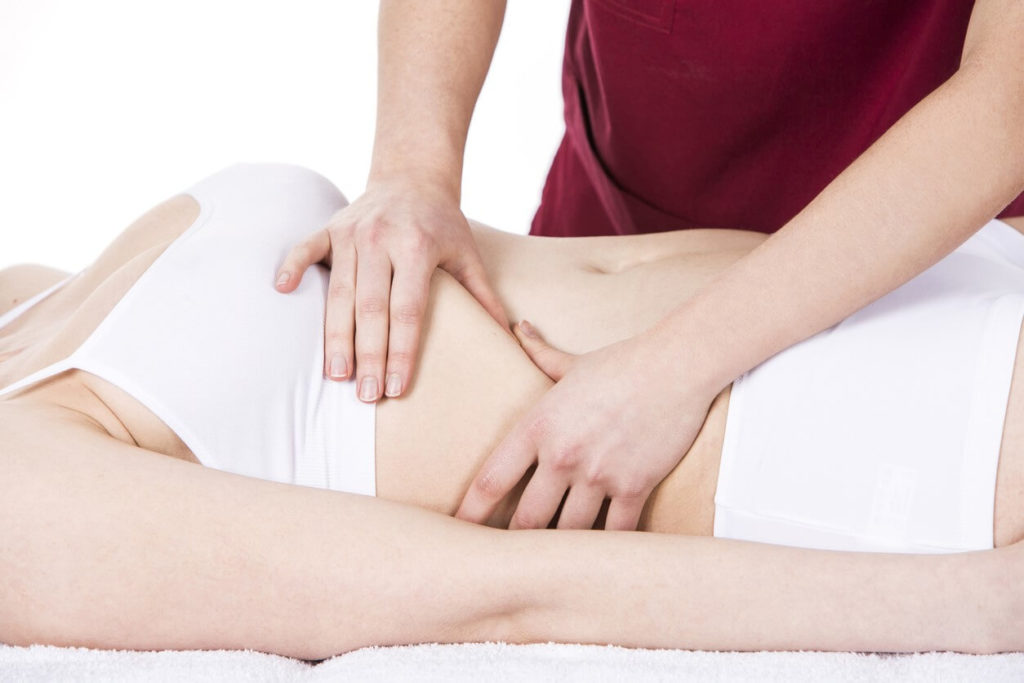How to massage and relax the diaphragm?
Written by: Loris Vitry (holistic coach)
Validated by: Cathy Maillot (Osteopath)
Caution: If you have any medical questions or concerns, please speak to your doctor. Even if the articles on this site are based on scientific studies, they do not replace professional medical advice, diagnosis or treatment.

When it comes to massage, most people are familiar with the main players: quadriceps, hamstrings, upper back, lower back, mid back, neck, hands, feet and arms…
Everyone knows their weak spots and knows how to crush them, stretch them and relax them.
But, how well do you know your diaphragm?
Have you ever heard the expression “breathe from your stomach” or “take a deep diaphragmatic breath”.
What does the diaphragm actually do and how do you massage it?
Roles of the diaphragm
The diaphragm is a sheet of muscles that separates the chest cavity, which contains the heart and lungs, from the abdomen.
By taking a deep breath, the chest cannot be lifted.
The diaphragm contracts and increases its size, drawing air into your lungs.
In doing so, it moves the internal organs in your abdomen and makes it stretch.
It needs to be tense every day.
The blood is therefore driven from the digestive and reproductive organs to supply the muscles allowing the body to flee or to fight.
One of the effects of stress on the body is frequent (sometimes constant) stimulation of the diaphragm.
Busy work schedules, unhealthy interpersonal relationships, lack of sleep… are all perceived by the body as threats, facilitating the contraction of the diaphragm and unconsciously stimulating the autonomic nervous system.
When the diaphragm is stretched, it triggers the cortisol release response.
This contraction causes a chain reaction that stops digestion and leads to a cascade of hormonal reactions which, over time (if the diaphragm is often contracted), can be associated with excess estrogen, testosterone and decreased blood pressure. progesterone.
This hormonal imbalance can lead to menstrual and fertility problems, and affect the uterus’s potential for maintaining pregnancy.
When the diaphragm is contracted, it also pulls on the fascia of the lungs, which can cause shallow breathing, preventing blood from reaching the heart.
The great news is that this muscle tissue is under both conscious and autonomous control.
This is where massages can help relax him.
The relaxation of the diaphragm helps to increase the dominance of the parasympathetic nervous system due to its close relationship with the phrenic nerve and to minimize the risks described above.
Massage the diaphragm in two steps
The first step is to release the tension in the abdominal muscles.
For this you will need to invest in a children’s playground style ball, much like the ones in handball.
This must be smaller than a basketball.
Take the ball and literally lie down with your stomach on it.
Here you are going to take a deep breath and push into the ball.
Hold your breath and start contracting your abs and relaxing them a few times, then exhale.
Repeat this for 2 to 3 minutes.
Then you can move the ball a little lower, just above the pubic bone, to release the lower abdominals as well as the iliacus inside your pelvis.
Again, take a deep breath, hold, contract, release and exhale for 2 to 3 minutes.
A slight lateral movement on the lower abdominals can help free the deep corners of your abdominal wall and diaphragm.
You will find that this particular release has a positive effect on any lower back strain that you may be feeling as well.
The next step is to clean the edges of your abdominal wall and the diaphragm around your rib cage.
For this you will need a relatively soft ball and a work surface.
Place it on a table, then lay the edge of your breastbone on top.
From there you’ll sink in slightly and start practicing back and forth.
If you experience any contact points, you can contract and relax your abs, push yourself in a little deeper, and continue to work the edge of your ribs and diaphragm for 3 to 5 minutes.
You can also gently massage the edge of the diaphragm with essential oils.
Sit down and put the oil-soaked fingertips under the ribs, inhaling lightly and exhaling deeply.
Two exercises to relax the diaphragm
Here are two effective exercises to relax the diaphragm.
Exercise 1
Stand in a comfortable position.
Start by stretching the left side of the diaphragm.
These fibers are mainly located between the 12th rib and the central tendon along the inside of the rib cage, which is called the zone of opposition.
Raise your left arm above your head and place your right hand on the lower part of your ribs on the left side.
As you exhale, flex your spine laterally to the right.
Inhale as you return to the upright position.
Repeat the movement for five breathing cycles.
Exhale as you move to the right; inhale as you return to the upright position.
Do the same exercise on the other side.
Finally, raise both arms and clasp your hands.
Bend your spine sideways to the right and to the left.
During lateral flexion, exhale; when you come back to the center, inhale.
Make four movements to the right and to the left.
Lower your arms to the side and stand for a while.
You will notice that your lungs feel like they are lifting you up like balloons and your breastbone is higher.
Exercise 2
Lie on your back on a flat surface so that you are in a relaxed position.
Place a small bag of sand or a large bag of rice on your stomach, just below the navel.
This will put additional pressure on your diaphragm, which will stretch further.
Take a deep breath and push the sandbag or rice bag up.
Continue this procedure 10 times; you should notice that you are now using your diaphragm more as you breathe.
Repeat this exercise daily to make sure your diaphragm is relaxed.
The diaphragm is a muscle that is extremely sensitive to stress.
He can therefore quickly feel tense, causing difficulty in breathing or even more serious problems.
Think about massage exercises to release tension.
Continue reading:
Assertiveness: how to develop assertiveness?

